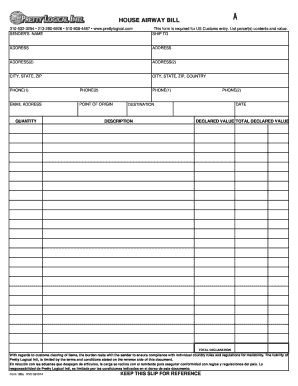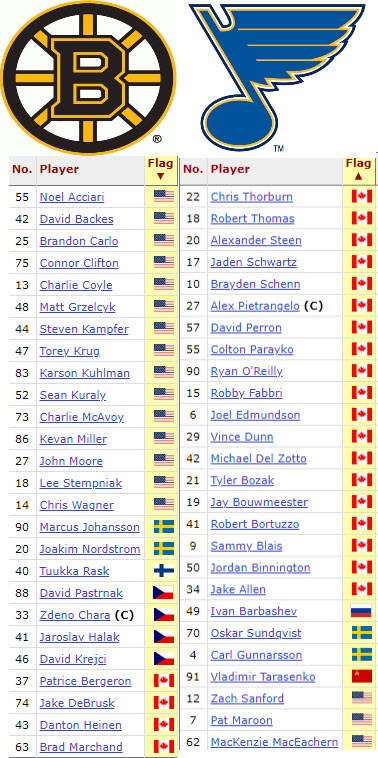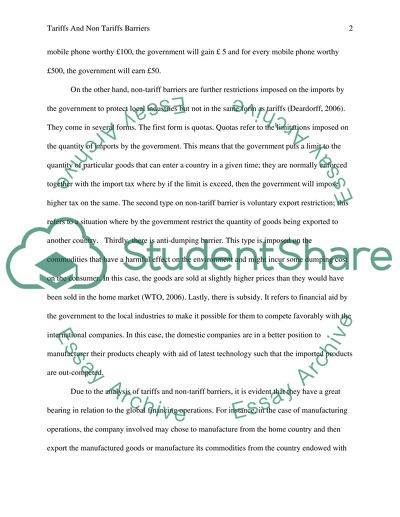
Ginnie Mae is the only home-loan agency explicitly backed by the full faith and credit of the United States government. Ginnie Mae also guarantees multiclass securities, which are based on a combination of existing MBSs. References to the Congressional Budget Office’s baseline budget projections refer to the July 2021 baseline. Although Ginnie Mae may seem like the new kid on the block, it actually predates Freddie Mac by a couple of years.
They’re all important pieces of the puzzle in the mortgage industry by increasing the mortgage market’s liquidity. Home affordability decreases when any of the three agencies decline, making it much harder for low-income families to buy homes. You may notice government-backed loans can be a little more flexible than many conventional loan guidelines. This is thanks to the guarantee offered by government agencies, such as Ginnie Mae. The guarantee reduces a lender's risk and allows them to have more flexible guidelines.
Although Fannie Mae and Freddie Mac were originally independent entities, they have been under the government’s control (in federal conservatorships) since the financial crisis of 2008. For more details, see Congressional Budget Office, Fannie Mae, Freddie Mac, and the Federal Role in the Secondary Mortgage Market (December 2010), /publication/21992. Although the FHA subsidy rate that CBO publishes is the average rate across all 1,000 paths for economic conditions, the model produces a subsidy rate for each path.

The subsidy rate measures the budgetary cost to the federal government per dollar of new guarantees. These organizations have underwriting guidelines for each loan program, and GNMA guarantees the payments for investors to provide more liquidity in the mortgage market. Ginnie Mae is one of three major bond issuers that facilitates the funding for most consumers in the real estate market. By guaranteeing principal and interest payments on mortgages that are part of its mortgage-backed security portfolio (more on that later), it provides investor protection against a borrower not being able to make their payment and defaulting on the terms of the loan.
Ginnie Mae’s guarantee operations have increased significantly in recent years. In addition, the types of mortgages included in the MBSs that Ginnie Mae guarantees—and the types of lenders that issue those MBSs—have shifted in ways that could increase Ginnie Mae’s exposure to the risk of losses on its guarantees. Arguably Ginnie Mae’s biggest impact on the lending industry is putting the U.S. government’s stamp of approval on certain mortgage-backed securities — namely, those bundling FHA, VA and USDA loans. GNMA guarantees that both the principal and interest will be paid in full and on time by government-approved loan issuers. That doesn’t mean Ginnie Mae will just make up the difference anytime a borrower misses a payment on their mortgage, though.
As investors look for a more diversified investment option that pays higher rates than CDs or money market funds, GNMA bonds become popular. Apply online for expert recommendations with real interest rates and payments. Development of Agriculture (USDA) through its Rural Housing Service (RHS) program. Intended to provide an affordable mortgage for those living in rural areas, USDA loans have several advantages.
The even better news is that you can request that mortgage insurance come off your monthly obligations once you reach 20% equity. Instead of mortgage insurance, there’s a VA funding fee that’s a percentage of the loan amount that depends on factors like your down payment, service status and whether you’ve used a VA loan in the past. In this article, we’ll go over what Ginnie Mae is, how it works and the role it plays in the markets in backing government loans for homes.

Finally, we’ll compare Ginnie Mae to Freddie Mac and Fannie Mae, the backers of conventional loans. Ginnie Mae does not buy or sell loans or issue mortgage-backed securities (MBS) and its balance sheet doesn't use derivatives to hedge or carry long-term debt. Although CBO did not calculate Ginnie Mae’s net losses in scenarios other than the one with a 1 percent chance of occurring, the average for 99 paths with no net losses and 1 path with net losses of 1.07 percent is net losses equal to 0.01 percent.
With those default and recovery estimates, the present value of default costs, net of recoveries, would equal 1.07 percent of the original principal balance of all MBSs newly guaranteed in 2022 under CBO’s severe stress scenario, compared with 0.01 percent in the baseline subsidy estimate. The subsidy rate that CBO uses for its baseline budget projections is calculated using the measures for the cost of federal credit programs specified in the Federal Credit Reform Act (FCRA). The Government National Mortgage Association (Ginnie Mae), a part of the Department of Housing and Urban Development, works to attract capital to the market for federally insured mortgages. It does so by guaranteeing the timely payment of principal and interest on mortgage-backed securities (MBSs) that private financial institutions create from mortgages that are insured or guaranteed by other federal programs. Fannie Mae and Freddie Mac are government-sponsored enterprises that were established by federal law to provide a stable flow of funding for home loans. They buy mortgages that are not insured or guaranteed by a federal agency, pool them to create MBSs, and sell the securities to investors with a guarantee against most losses from defaults on the underlying loans.
Not all proposals for restructuring include a modified role for ginnie mae, but most recognize that changes to the GSEs might also require the Federal Housing Administration (FHA), the Department of Veterans Affairs (VA), the Rural Housing Service (RHS), and Ginnie Mae to adapt to those changes. Ginnie Mae’s guarantee that investors in qualifying MBSs will receive timely payments of principal and interest requires it to assume the obligations for an issuer’s entire portfolio of outstanding MBSs when the issuer fails. As a result, Ginnie Mae faces the same concerns that issuers face, including having to cover uncollected mortgage payments for MBS investors and settle claims with primary government guarantors for defaulted mortgages. Ginnie Mae’s liquidity concerns are alleviated by the fact that it can borrow funds from the Treasury. But that borrowing exposes taxpayers to the risk that the funds will not be recovered from the mortgage borrowers or primary government guarantors. CBO then uses its projections of the volume of guarantees by FHA, VA, and RHS to project the volume of guarantees by Ginnie Mae.
The more relaxed guidelines ensure borrowers can secure financing without large down payments, perfect credit or low debt-to-income ratios. Ginnie Mae operates under the blanket of the Department of Housing and Urban Development (HUD), along with other government agencies, such as the FHA, VA and USDA. When lenders don’t have to hold onto mortgages and can instead sell them on the secondary market, it frees up more capital, allowing them to write more mortgages. Ginnie Mae guarantees FHA loans, VA loans, USDA loans and the Section 184 loan program to help facilitate Native American homeownership. Fannie Mae and Freddie Mac are GSEs that have government backing, but they’re not government entities themselves. From the perspective of someone looking to get a mortgage, conventional mortgages offer down payments as low as 3%, although you can avoid mortgage insurance entirely with a 20% down payment.
As a result, Ginnie Mae is projected to recover 70 percent of its outflows for delinquencies and defaults in 2022 under CBO’s severe stress scenario, compared with 96 percent in the baseline subsidy estimate. The Administration calculates Ginnie Mae’s cash flows from recoveries as a share of its cash outflows for delinquent and defaulted mortgages in failed issuers’ MBSs. Thus, the first step in CBO’s estimate of recoveries in a severe recession was to increase the Administration’s estimate of average recovery cash flows by the same 20-fold multiplier used to adjust defaults. The coronavirus pandemic that began in 2020 and the resulting recession in the United States have had a negative effect on the financial condition of many borrowers, including those with mortgages contained in Ginnie Mae–guaranteed mortgage-backed securities (MBSs). To compensate for that risk, Ginnie Mae charges issuers a guarantee fee of 6 basis points (0.06 percent) of the outstanding balance of an MBS.
She has a Bachelor of Science in Finance and an MBA from West Chester University of Pennsylvania. She writes for publications like Rocket Mortgage, Bigger Pockets, Quicken Loans, Angi, Well Kept Wallet, Crediful, Clever Girl Finance, AllCards, InvestingAnswers, and many more. For example, Morningstar reports that the Vanguard GNMA fund has had a 6.3% return over the last ten years, making it a great fixed-income asset. Shareholders own Fannie Mae and Freddie Mac, whereas the government owns and runs Ginnie Mae. In order to qualify for this loan option, you have to live in a qualifying rural area.
But Ginnie Mae would be exposed to the risk of large losses in a period of severe economic stress that included high default rates on mortgages and widespread insolvency among issuers of its guaranteed MBSs. The two recent shifts in those MBSs—the increasing prevalence of loans from nonbank institutions and of VA-guaranteed loans—could increase Ginnie Mae’s losses during times of stress. The Government National Mortgage Association, known as Ginnie Mae, is a government-owned corporation within the Department of Housing and Urban Development. Since its establishment in 1968, Ginnie Mae has aimed to attract capital to the market for federally insured mortgages, and thus reduce costs to mortgage borrowers, while minimizing risk to taxpayers. Using the Administration’s estimates of cash flows for Ginnie Mae, CBO projects in its July 2021 baseline that Ginnie Mae’s outflows in 2022 for delinquent and defaulted loans in failed issuers’ MBSs will equal 0.19 percent of the original principal balance of the new MBSs that Ginnie Mae will guarantee in 2022.
Fitch Downgrades Muni Ratings Tied to U.S. Sovereign Ratings to ....
Posted: Thu, 03 Aug 2023 20:33:00 GMT [source]
The interest rates are also based on the market rather than your credit score. One of the main benefits of the program is that there’s no required down payment. Another is that guarantee, or funding, fees on USDA loans are cheaper than the monthly and upfront mortgage insurance payments for FHA loans. At the same time, the liquidity being provided for nonbank and other mortgage lenders helps keep funding for government-backed loans more affordable than if banks and other mortgage originators were forced to hold the loans for significant periods of time. The GNMA is also ostensibly the only Mae or Mac backed by the full faith and credit of the federal government.
2020-09-29
